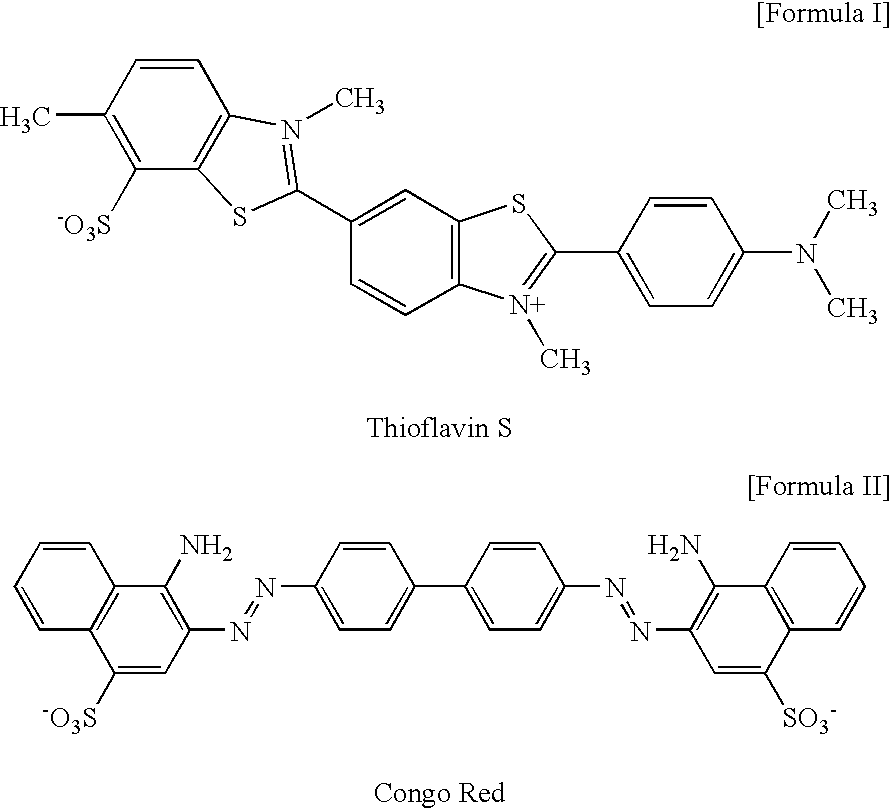2-arylbenzothiophene derivatives or pharceutically acceptable salts thereof, preparation method thereof, and pharceutical composition for the diagnosis or treatment of degenerative brain disease containing the same as active ingredient
a technology of arylbenzothiophene and derivatives, which is applied in the direction of drug compositions, group 3/13 element organic compounds, cadmium organic compounds, etc., can solve the problems of reducing the clinical effect of atypical atypical atypical atypical atypical atypical atypical atypical atypical atypical atypical atypical atypical atypical atypical atypical atypical atypical atypical atypical atypical atypical atypical atypical a
- Summary
- Abstract
- Description
- Claims
- Application Information
AI Technical Summary
Benefits of technology
Problems solved by technology
Method used
Image
Examples
preparation examples 1-2
Preparation of 4-methoxybenzothiophene and 6-methoxybenzothiophene
[0133]Bromoacetaldehydediethylacetal (2.15 g, 15.0 mmol) was slowly added to an acetone solution (50 mL) containing 2-methoxythiophenol (90, 1.92 mL, 12.8 mmol) and potassium carbonate (2.65 g, 19 mmol) at room temperature, and the reaction mixture was stirred at room temperature for 12 hours. Water (100 mL) was added to the reaction mixture and organic compounds were extracted with ethyl acetate, evaporated after a treatment with sodium sulfate, and concentrated under reduced pressure, and purified by column chromatography to give the target compound (2,2-diethoxyethyl)(3-methoxyphenyl)sulfane as a pale yellow liquid (91, 2.61 g, 80%) having the following physical data:
[0134]1H NMR (400 MHz, CDCl3) δ 1.20 (t, J=7.2 Hz, 6H), 3.13 (d, J=5.6 Hz, 2H), 3.65-3.76 (m, 2H), 3.52-3.56 (m, 2H), 3.82 (s, 3H), 4.65 (t, J=5.6 Hz, 1H), 6.70 (dd, J=8.0 Hz, 2.0 Hz, 1H), 6.94 (m, 2H), 7.17 (t, J=4.0 Hz, 1H); 13C NMR (100 MHz, CDCl3) ...
preparation example 1
[0136]4-methoxybenzothiophene (92a); 1H NMR (400 MHz, CDCl3) δ 3.95 (s, 3H), 6.74 (d, J=7.6 Hz, 1H), 7.27 (d, J=8.0 Hz, 1H), 7.32 (d, J=5.6 Hz, 1H), 7.46 (dd, J=0.8, 7.2 Hz, 1H), 7.50 (d, J=5.6 Hz, 1H); 13C NMR (100 MHz, CDCl3) δ 55.42, 103.72, 114.76, 120.44, 124.48, 125.15, 130.35, 141.21, 154.93.
preparation example 2
[0137]6-methoxybenzothiophene (92b); 1H NMR (400 MHz, CDCl3) δ 3.82 (s, 3H), 7.01 (dd, J=8.8, 2.0 Hz, 1H), 7.56 (d, J=2.0 Hz, 2H), 7.82 (m, 2H); 13C NMR (100 MHz, CDCl3) δ 56.0, 105.3, 114.9, 125.1, 131.4, 135.3, 138.9, 144.9, 158.0.
PUM
 Login to View More
Login to View More Abstract
Description
Claims
Application Information
 Login to View More
Login to View More - R&D
- Intellectual Property
- Life Sciences
- Materials
- Tech Scout
- Unparalleled Data Quality
- Higher Quality Content
- 60% Fewer Hallucinations
Browse by: Latest US Patents, China's latest patents, Technical Efficacy Thesaurus, Application Domain, Technology Topic, Popular Technical Reports.
© 2025 PatSnap. All rights reserved.Legal|Privacy policy|Modern Slavery Act Transparency Statement|Sitemap|About US| Contact US: help@patsnap.com



